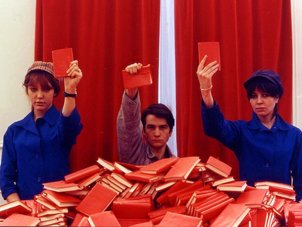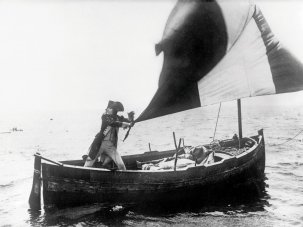1. 7th Heaven
Frank Borzage, USA, 1927
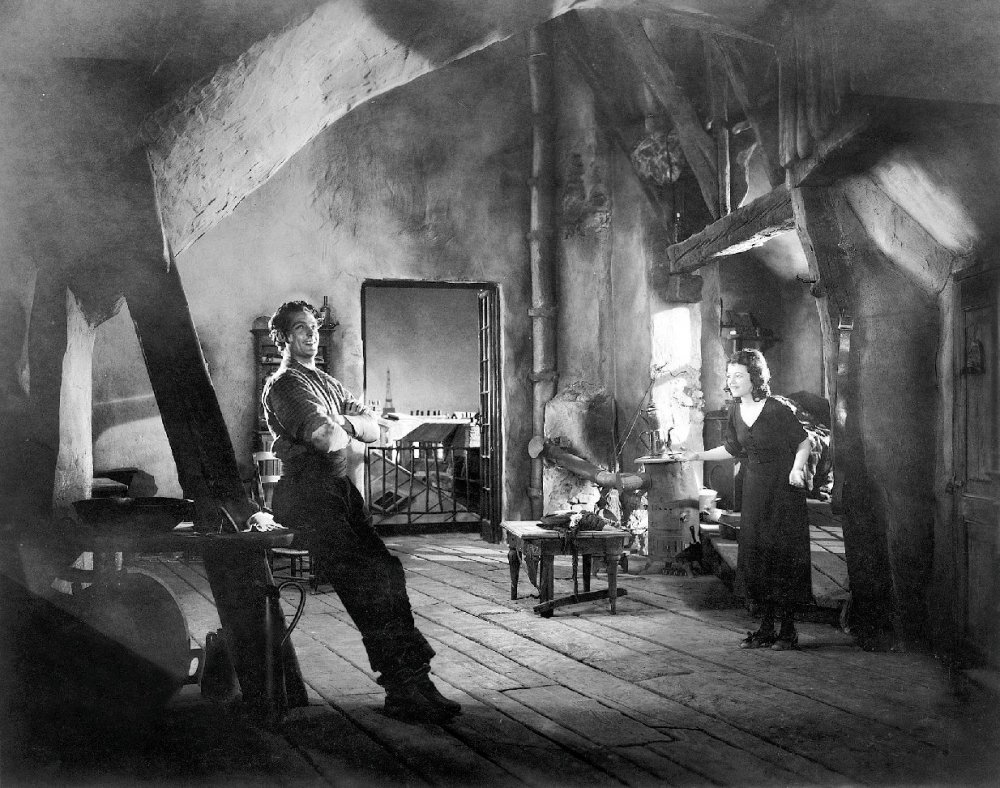
“Too transcendental for its own good.”
As a project for transcendental romanticism, 7th Heaven is undoubtedly too transcendental for its own good. When the blessings not only of l’amour fou but of religious salvation and salt-of-the-earth populist comedy are squeezed out of a social environment that might have made Griffith blush for its Dickensian schematism, then Borzage’s romanticism begins to seem a rather smothering state of grace.
His lovers’ escape to a higher plane is too literally/easily achieved by their climb to the 7th floor, and their suspension of the laws of reality and probability is painlessly accomplished in advance by the Hollywood conventions for describing a low-life environment, with much emphasis on the spiritual degradation and none on the economic necessity of poverty: the original play seems to have been quite clear that Diane supports herself, and keeps her bullying sister in absinthe, by prostitution. (Borzage’s romanticism is not the same as the sentimental evasions imposed by censorship, but in the context they too easily merge into one another.)
Further, of all his couples, Janet Gaynor and Charles Farrell are so close to Victorian stereotypes – trembling waif and great-hearted simpleton – that their transfiguration by love, and their consequent exchange of strength and weakness, seem to come as a matter of course.
— Richard Combs, Monthly Film Bulletin July 1980 (reviewed upon the film’s re-release)
2. The Private Life of Henry VIII
Alexander Korda, UK, 1933
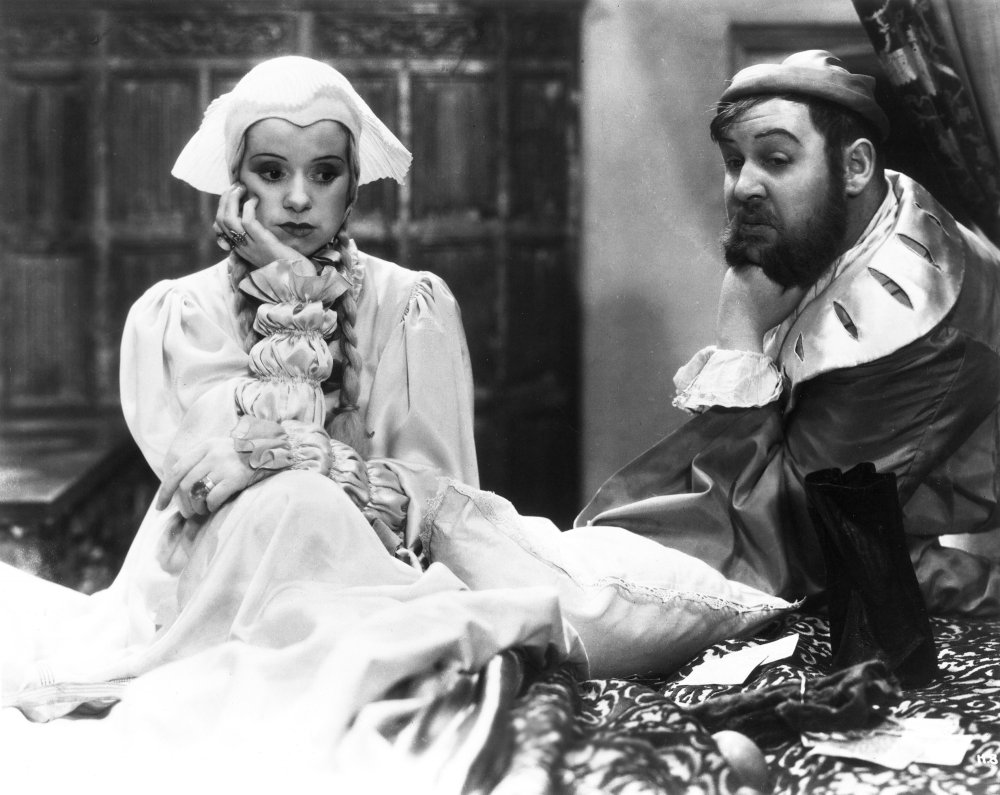
“Only Henry’s admirers, if any, will cavil at this well-directed and acted production.”
Henry VIII and his matrimonial misadventures have always been considered a joke by all but the sober historian, and this film’s direction and script deal with him wittily from the popular angle, giving only the barest hints of the other sides of the all-too-efficient tyrant whose love-life, though spectacular, was only a part of his complex character.
However, as the film’s point of view stands confessed in the title, only Henry’s admirers, if any, will cavil at this well-directed and acted production, which is well worth seeing, either again or for the first time, though it does not now stand out from other British films as strikingly as it did when first shown in 1933. Laughton is lifelike as the Henry of the film, a coarse and uncomplicated tyrant; Merle Oberon looks beautiful during her short appearance as Boleyn; Elsa Lanchester is amusing as Anne of Cleaves; Robert Donat is an attractive Culpeper, lover of Katherine Howard, who is well played by Binnie Barnes; and the rest of the distinguished cast are all good.
— V.M.C.D., Monthly Film Bulletin, July 1946 (reviewed on its re-release)
3. None Shall Escape
André de Toth, USA, 1944
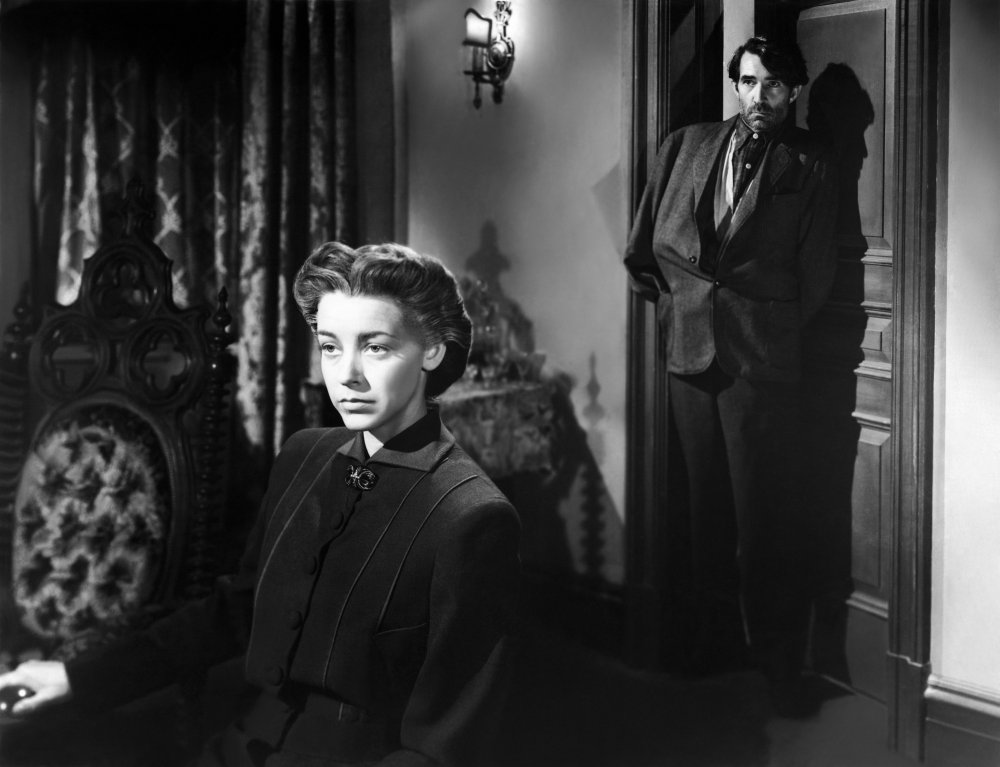
“A moving and, mostly, convincing appeal for justice.”
Toth has handled the basic action of the story – Nazi horrors in occupied Europe – with smooth efficiency (although he has permitted two deficiencies infrequent in Hollywood films, exaggerated makeup and definite faults in the camerawork). Argument is inevitable, however, on the message of the film and the method of its presentation. This is a moving and, mostly, convincing appeal for justice, retribution against every war criminal. One question is whether that justice should be dealt out by such courts as here advocated.
— K.F.B., Monthly Film Bulletin, June 1944
4. Silence Is Golden
René Clair, France, 1947
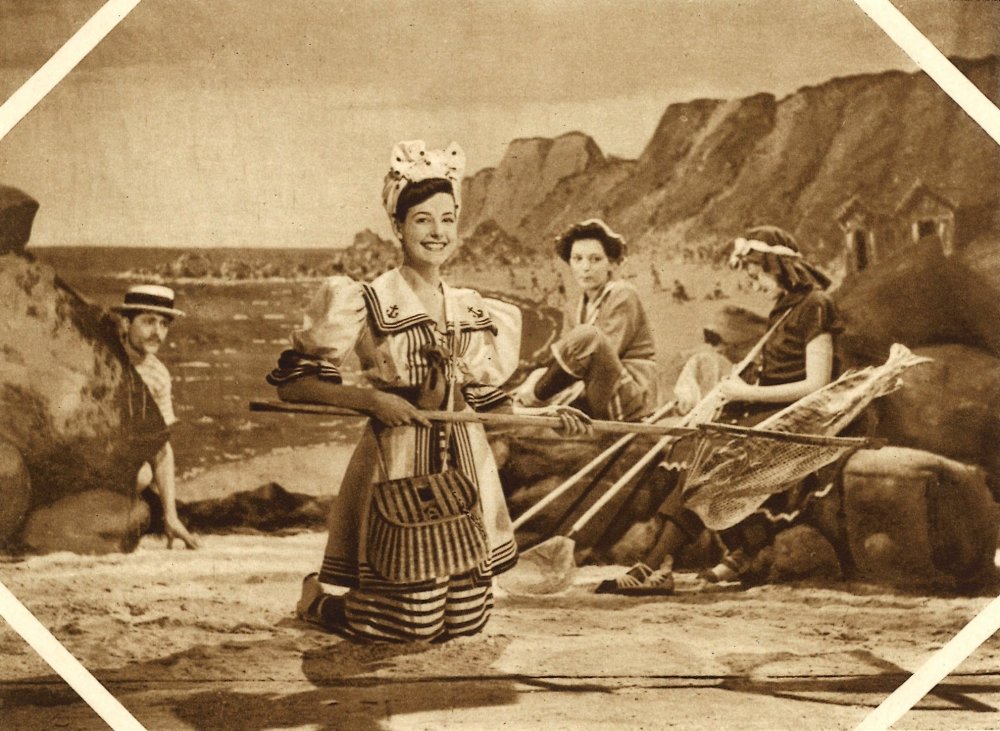
“All the old fascinating Clair tricks are there.”
This film is absolutely enchanting. Certainly Chevalier has aged with the years, but in spite of a more serious role than usual, the gamin is still there. All the old fascinating Clair tricks are there, too; the music is always perfection. There is some wonderful slapstick and most of the scenery in the film studio falls down at one time or another. It must be admitted that this is not the best work of René Clair, and because of this many may be disappointed with the occasionally flagging dialogue and slowing up of the tempo.
— Monthly Film Bulletin, August 1948
5. High Tension
Ingmar Bergman, Sweden, 1950
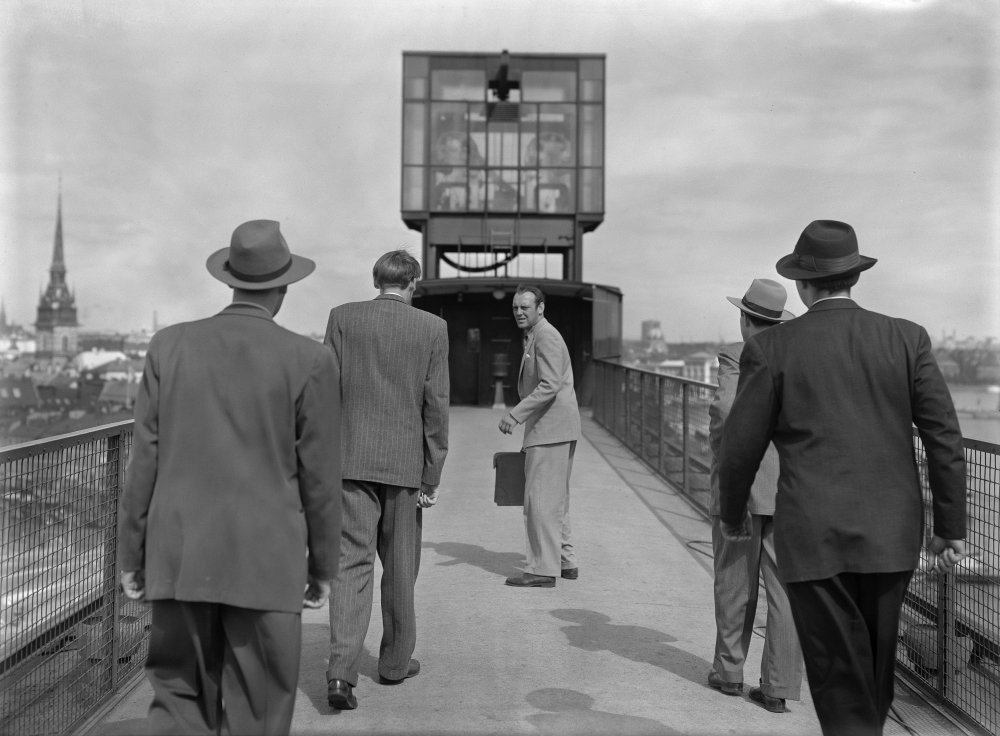
“Chases, secret plans and sudden deaths.”
This very confused production may be termed a Swedish contribution to the current ‘anti-Red’ cycle. The agents are the usual hard-faced thugs who resort to violence at every possible moment, and the story follows the familiar pattern of chases, secret plans and sudden deaths. This version has obviously been badly cut, the continuity being, at times, quite chaotic. The playing is flat and conventional – everyone speaks in harsh, broken accents – and the English dubbing does nothing to clarify the numerous unexplained incidents in the plot. One redeeming feature is Gunnar Fischer’s excellent location photography.
— Monthly Film Bulletin, January 1953
6. Some Like it Hot
Billy Wilder, USA, 1959
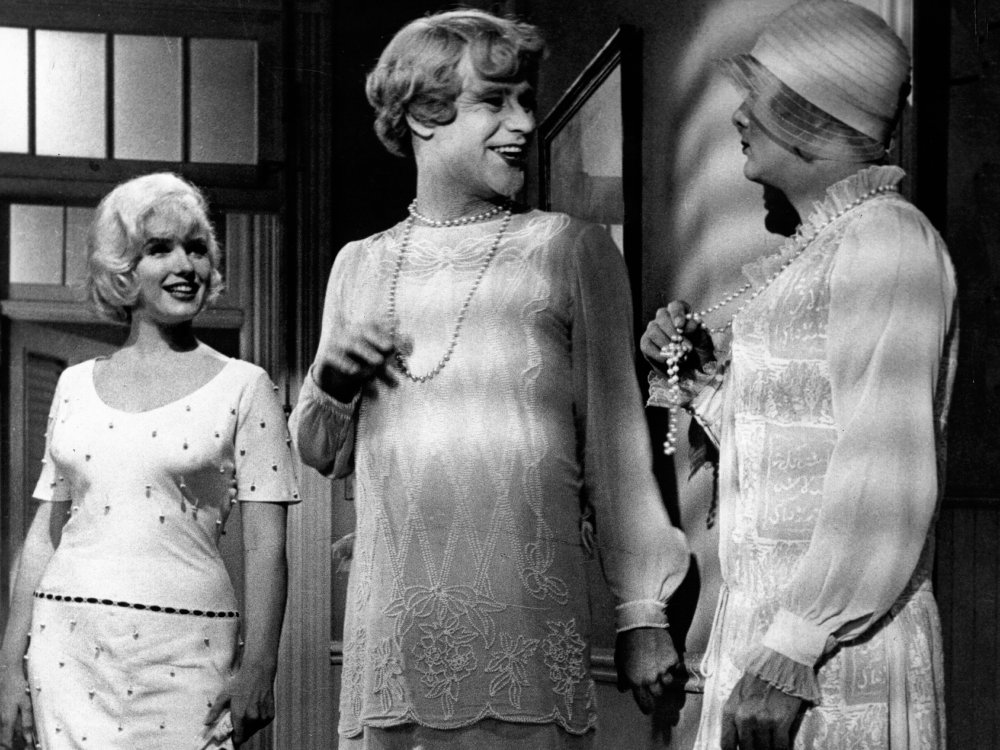
“Painted and padded and tilting at a perilous angle, two jazz musicians on the run join an all-girl train.”
Billy Wilder’s Some Like it Hot will not appeal to those who find female impersonation unamusing in any circumstances; and certainly, since it also contains two painfully accurate re-creations of gangland slaughter, its opportunities for offence are considerable.
Although the comedy never quite shakes off this basic confusion in styles, it comes to life from the start. A suddenly speeding hearse sets the pace, a leaking coffin of whisky the pre-credits setting – Chicago in the freewheeling 1920s – and a funeral parlour front to a speakeasy the comedy’s predominant note of incongruity and masquerade. Soon, painted and padded and tilting at a perilous angle, two jazz musicians on the run join an all-girl train call for Florida.
Extravagance takes over on arrival, when Jack Lemmon’s husky squeaks and girlish dormitory confidences give way to frolicking chaperonage and beach games. Courted by a dotty, much-married millionaire (Joe E. Brown), the duenna mellows into a teasing siren, tangoing through the night with a rose gripped wistfully between her teeth. This is a brilliantly worked-out performance. If Tony Curtis’s cooing Josephine is by contrast a shade too real for comfort, the actor’s heavier style of burlesque is better suited to a secondary impersonation, in yachting cap and blazer, of a pseudo-Cary Grant petroleum tycoon. Marilyn Monroe is charmingly herself, if a little wan, but her role of innocent at large is too peripheral to strike a useful balance with the film’s blacker and more clinical humours.
Almost every character has a touch of consulting room fantasy. (Like Love in the Afternoon, the Wilder &. A. L. Diamond script is distantly adapted from an old German film.) Apart from female impersonation, Tony Curtis takes a foam bath fully dressed and seduces a solicitous Marilyn by feigning doubts about his potency; Marilyn herself has a weakness for men in glasses – large pebble ones at that; George Raft makes a fetish of his immaculate spats; Joe E. Brown, having unerringly picked out the most heavily muscled girl in sight, is not in the least surprised to learn that he has eloped with a man. “After all,” he says, “nobody’s perfect.”
Obviously the day is that much nearer when Billy Wilder must film Hirschfeld’s Anomalies and Perversions as a musical. So long as it casts Jack Lemmon as an Oedipus complex, there should be no grounds for complaint.
— Peter John Dyer, Sight & Sound July 1959
7. Tunes of Glory
Ronald Neame, UK, 1961
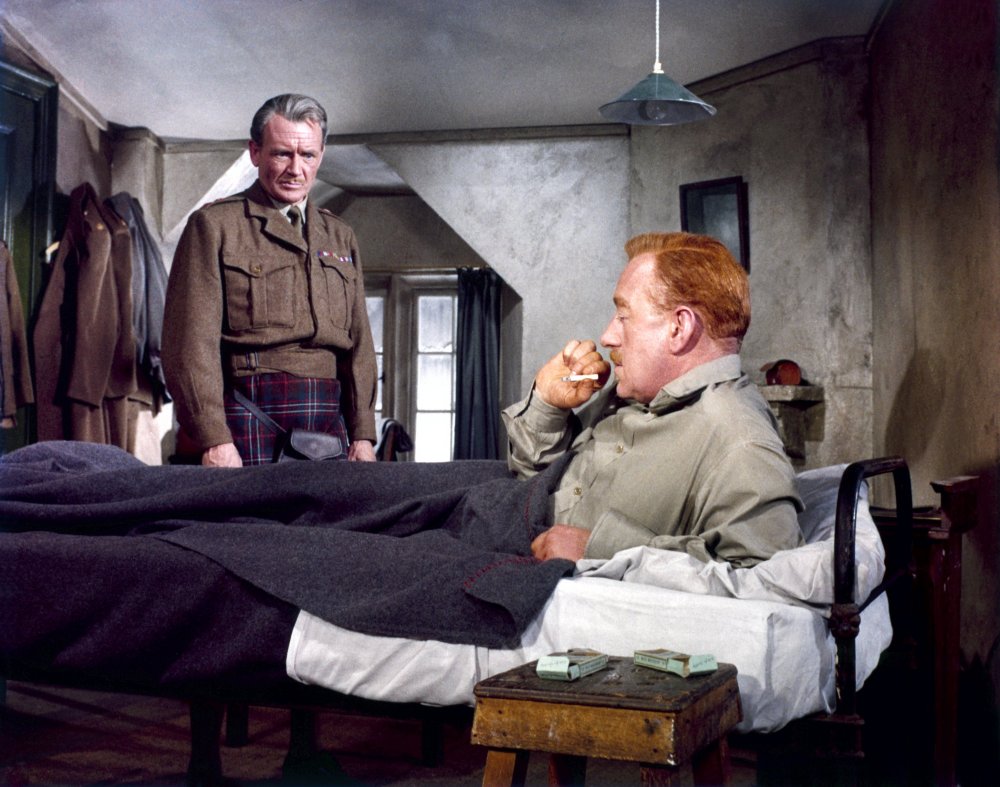
“John Mills brings an edgy dignity and severity to the newcomer, Barrow.”
Tunes of Glory (United Artists), though concerned with the British Army, treats of topics adult enough to preserve it generally from the familiar extremes of sang-froid heroics, non-commissioned humour and empire-carving. Its basic situation – the clash between a battalion’s new commanding officer and his slack, eccentric predecessor – can be found in similar terms in every walk of life. But here it is heightened by confining the action largely to the closed society of a bleak Scottish regimental depot, and in particular to the officers’ mess with its oppressive furnishings, martial relics and atmosphere of boorish camaraderie.
The retiring C.O., Sinclair, is an unattractive mixture of easy-going discipline on parade and crude defensive bluster in his dealings with his officers, who unlike him have achieved commissions through Sandhurst rather than the pipe band. Alec Guinness, red-wigged and moustached, swaggers through the part with fiery and raffish gusto, though not much interior conviction. John Mills brings an edgy dignity and severity to the newcomer, Barrow, fresh from the War Office.
— Terence Kelly, Sight & Sound, Winter 1960/61
8. The Fog
John Carpenter, USA, 1979
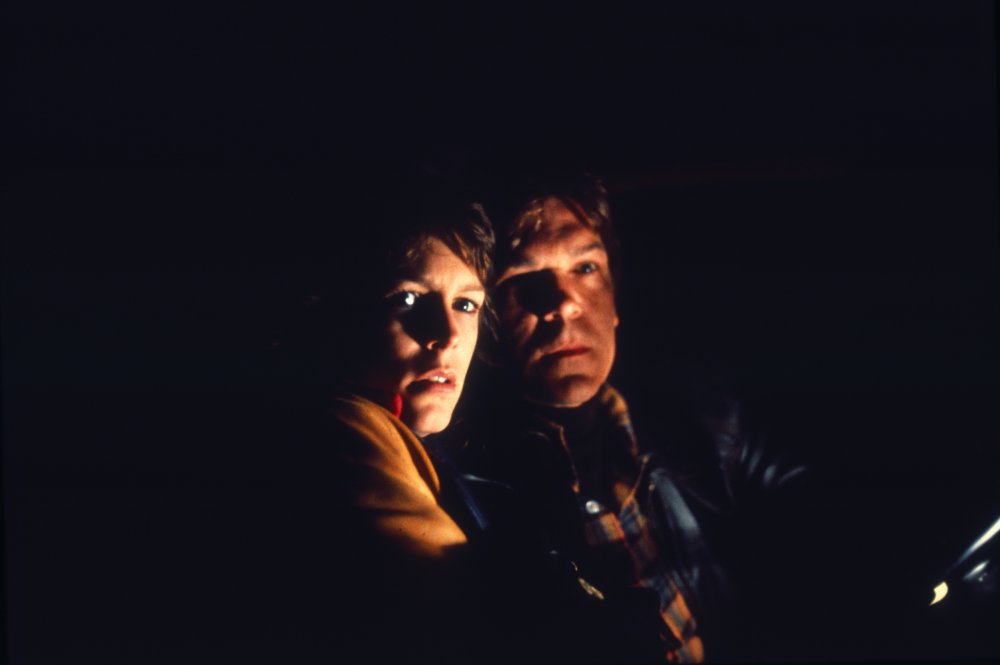
“As magically and disturbingly exact as anything in Poe.”
The opening of The Fog, prefaced by a quotation from Poe (“Is all that we see or seem/But a dream within a dream?”), is as stunningly effective as anything John Carpenter has done to date. First the sound of a ticking watch, then the watch itself suspended in mid-air and revealed to be one of the props used by an old seadog to charm a circle of children, tingling with anticipations of fright as he spins his yarn of the fog and the clipper ship that foundered that same night a hundred years ago.
Far too cultured and cosmopolitan to convince as an old salt on the seashore, John Houseman paradoxically suggests instead that we are listening to a poet of terror, kin perhaps to Poe himself. And the ensuing title sequence, repeatedly cutting to midnight clocks as inexplicable occurrences threaten the sanity of the sleeping town-glass suddenly shatters, lights come on in a deserted garage, a car hoist sets itself in motion, an unattended pump gushes petrol – is as magically and disturbingly exact as anything in Poe.
All too soon, however, everybody is too busy screaming or shrinking from red-eyed apparitions (another miscalculation) to worry about character. Given Carpenter’s superbly assured use of the Panavision format, of course, his images are usually a pleasure and the film rarely without interest. But with even the customary movie nods (chiefly to Hitchcock: Bodega Bay, the Catholic church, the disruptive intrusion of women) largely extraneous here, The Fog emerges as an uneasy venture down a blind alley.
— Tom Milne, Monthly Film Bulletin, November 1980
9. Pixote
Hector Babenco, Brazil, 1981
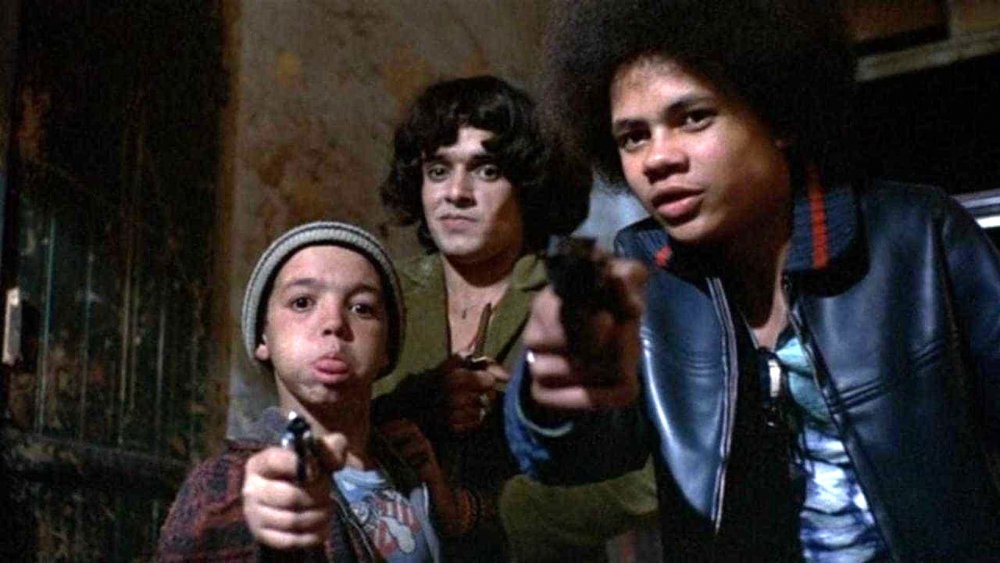
“Hot from its astonishing success in New York.”
Hot from its astonishing success in New York (where it ran for a year at the prestigious Quad cinema), and heralded by tales of censorship battles throughout the world, Pixote arrives in this country in what appears to be an upsurge of interest in the ‘new’ Brazilian cinema. It could not be more different from the ‘Cinema Novo’ films of the 1960s and early 70s, which were heavily allegorical in approach in order to circumvent stringent political censorship.
Pixote opens with director Hector Babenco standing on a hill overlooking the slums of Sao Paulo, quoting statistics direct to camera (facts…), and pointing out that the actors in the film come from similar backgrounds to the boys they portray (…faction…), before he stands aside – literally, as the camera glides past him to descend into the Sao Paulo streets – to make way for the story (…fiction). But any anchoring of the film in the social realities of Brazil’s urban urchins stops here. From the closed, claustrophobic world of the reform school, with its routine rapes, bullying (by officials and boys alike), and hierarchies of violence, to the open, but equally limited life of the boys on the outside, the film takes its cue from other conventions – sensationalism being in the forefront.
— Jo Imeson, Monthly Film Bulletin, January 1983
10. Sugar Cane Alley
(ala Black Shack Alley / Rue Cases Negres) Euzhan Palcy, France/Martinique, 1983
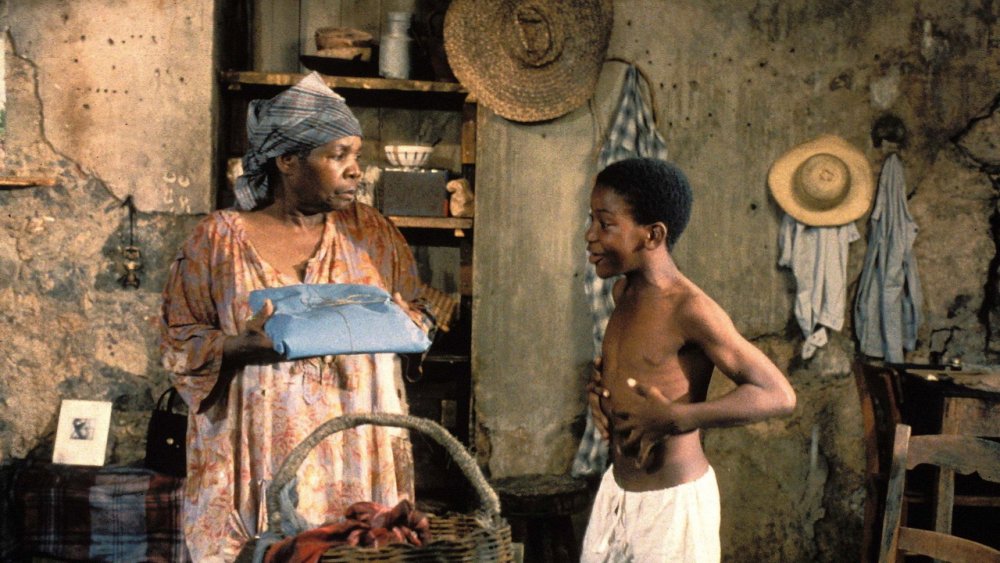
“Jose’s story is a classic of its kind.”
Black Shack Alley is of particular interest both as the first full-length feature by the documentary filmmaker Euzhan Palcy, and as an example of the difficulties Third World directors in general – and those from French colonies in particular – encounter in their search for an authentic voice. Traditionally, Hollywood assimilates all the Caribbean countries into one huge American dependency, making little distinction between New Orleans, the pre-Civil War Southern states and the Antilles. This might be described as the ‘Blue Bayou’ school of filmmaking, and it is neatly subverted by Palcy both with regard to the story she films and (though to a lesser extent) the way it is filmed.
In Black Shack Alley, there is a scene of drunken merriment, but it is the children who have managed to get hold of some rum while the adults, seen on pay-day, manifest a degree of surliness. Similarly, these smiling natives, imbued with a strong sense of rhythm turn their talents for community singing to derision of the whites, with a rendition of the hymn to the Matibique revolution. Jose’s story is a classic of its kind, and Palcy treats it with the lucidity needed to convey the scale of his achievement.
— Jill Forbes, Monthly Film Bulletin, July 1984
11. The Unbearable Lightness of Being
Philip Kaufman, USA, 1987
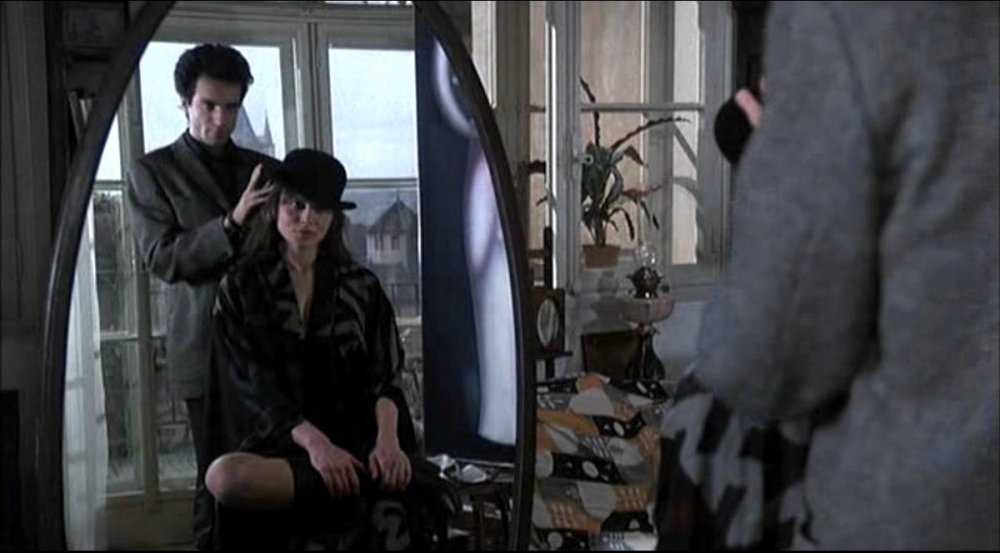
“Its powerful atmospheric is compounded by a stream of rich and sensitive details.”
Milan Kundera’s novel (1984) epitomises a Czech tonality: a warm irony, the comic, sardonic and tragic playing ducks and drakes, and intimist ‘little touches’ exposing the personal and the political, separately and together, as wryly absurdist…
Here the Oedipus myth is more political than sexual, a shift appropriate to the 60s when ‘liberal’ Communism and ‘liberated’ sexuality were gleams in History’s eye. Nostalgia apart, the sexual theme relates to that major, and ongoing, American genre which might be called the ‘comedy of manners’. The sudden swerves of narrative tack evoke Terms of Endearment; the reliance on friendship networks, The Four Seasons; the triangle-into-threesome, Willie & Phil; the general unsureness, a shift from the nuclear family to serial marriage, to Me-generation and feminine mobility, and to a new focus on female desire, whether compulsively independent (Sabina) or traditionally compelling (Tereza’s grass-root values recapture, and satisfy, Tomas)…
Although the film’s political criticisms ruled out Czech locations, its powerful atmospheric is compounded by a stream of rich and sensitive details: a surgeon’s hand swaying to brass-band music in mid-operation, the sly Schadenfreude of ‘collaborators’ towards colleagues not yet compromised by neo-Stalinism, a rustic Czech violinist rendering ‘Sentimental Journey’. The struggle of Czech crowds against Russian tanks, and the photography session, constitute morceaux de bravoure. Although the visual style reflects prevalent problems of composing for large and small screen simultaneously, the photography is very beautiful, piercingly so in the Victorian flavour of the ‘road to eternity’ down which Tomas and Tereza are headed in the final shot.
— Raymond Durgnat, Monthly Film Bulletin, April 1988
-
The Digital Edition and Archive quick link
Log in here to your digital edition and archive subscription, take a look at the packages on offer and buy a subscription.







